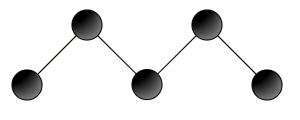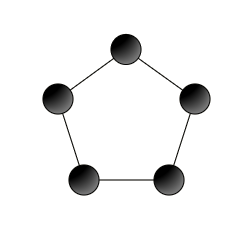Our IUPAC nomenclature tool features on-the-fly, stereochemistry complete naming updated as you design your molecule.
To view more detailed information about the molecule you've created,
please clickhere to see the molecule with our full-featured design tool.
Advanced design tool includes
- Detailed information about each atom in your molecule including hybridization and number of free electrons
- Display of overall molecule properties including aromaticity
- A link to your molecule so you can share the molecule you have created with others. Also a link to search Google and PubChem for your molecule
- Alternative view modes of your molecule including showing all Hydrogen atoms and viewing a ball-stick model
- An option to turn off stereochemistry nomenclature
Our IUPAC name parsing feature allows you to view and interact with the molecule itself simply by entering the systematic or common IUPAC name of the molecule. You
can enter the name with or without stereochemistry.
If your name isn't quite correct, it will also try to guess what you meant. For example, if you enter the molecule name
"propanone", it will guess that you meant a propane chain with a ketone functional group located on the first carbon, and show you the propanal molecule with an aldehyde group instead.
Try it out! If you're feeling adventurous, you can also try entering abbreviations for molecules, including the 1 and 3 letter amino acid abbrevations and SMILES format names.
Also feel free to view your molecule with our full-featured design tool.
Our reaction simulator tool anticipates the product of a specific reaction applied to a given starting reactant molecule.
Rules are used to
predict the product based on functional groups present and other properties of the reactant molecule, rather than just the specific IUPAC name of the molecule. For example, the chlorination of an alkene reaction will replace
the double bond of two alkene carbons with a chlorine atom attached to each carbon. The power of modeling reactions with rules in this manner is that the rules can be extended to a wide
variety of molecules. Not only can we anticipate that propene will be chlorinated to 1,2-dichloropropane, but more generally we can anticipate that a molecule <chain name>ene will
be chlorinated to 1,2-dichloro<chain name>ane.
Click here to view a complete list of all the reactions we have currently modeled along with detailed rules and examples for each reaction.
Our pathway search tool allows you to enter a given starting reactant and product molecule and search for a synthesis pathway between the two.
Options can be selected for finding a variety of the most optimal synthesis pathways, including
- Fewest number of steps
- Lowest cost
- Shortest reaction time
You can control the sources our tool will utilize in searching for the optimal pathway, including
You can also use our Smart Search feature to aid in your synthesis pathway search. The Smart Search uses a heuristic calculation to guide its pathway search from the origin molecule to the goal molecule.










![bicyclo[4.3.0]nonane](/Images/Skeleton/bicyclo[4.3.0]nonane.png)
![bicyclo[4.4.0]decane](/Images/Skeleton/bicyclo[4.4.0]decane.png)















